České Budějovice is the capital of the South Bohemian Region. It’s a medium-sized city with a historic center located close to the train station. The main square (Přemysl Otakar II Square) is one of the largest squares in the Czech Republic. The historic area is relatively compact; preserved city gates and portions of the town walls can still be seen. Along the Vltava River, there are pleasant parks and walking or recreational areas. The city is also a key railway hub, making it easy to plan day trips by train from České Budějovice to many interesting places in the Czech Republic and Austria.
Day trips from Ceske Budejovice by train – direction: Nové Údolí
Ruins of Dívčí Kámen Castle – Well-preserved ruins located about 1.5 km from the Třísov train stop. Entry requires a ticket.
Zlatá Koruna Monastery – A monastery worth visiting, located 2 km from the train station of the same name, built on a promontory surrounded on three sides by the Vltava River. Two tour routes are available.
Český Krumlov – One of the most beautiful towns in the Czech Republic, nestled in a bend of the Vltava River. Due to its location and numerous historical sites, it has seen a surge in tourism from around the world, and some consider it overly commercialized. The historic center is about 1.5 km from the station; highlights include the castle with a museum, historic townhouses, narrow winding cobbled streets, and a unique atmosphere. There are many museums, some existing primarily for quick profit. This town is a must-visit.
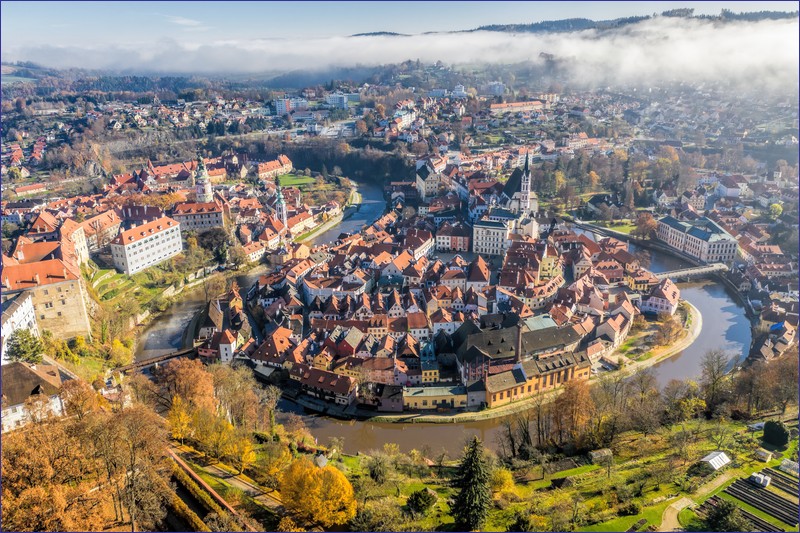
Olšina (optional) – A 7 km educational trail created along Olšina Pond and a protected area of the same name, separated from the Boletice military training area in 2016.
Prachatice – A town of 11,000 residents with a historic center. Large portions of the town walls and a city gate are still preserved. Sites include the Prachatice Museum, the Lace Museum, religious monuments such as the Church of St. James the Greater (with a tower open to tourists), and chapels scattered across the town. Suitable for a two-hour visit. Prachatice is located on the local Číčenice–Nové Údolí railway line; accessible from České Budějovice via a transfer at either Číčenice or Nové Údolí.
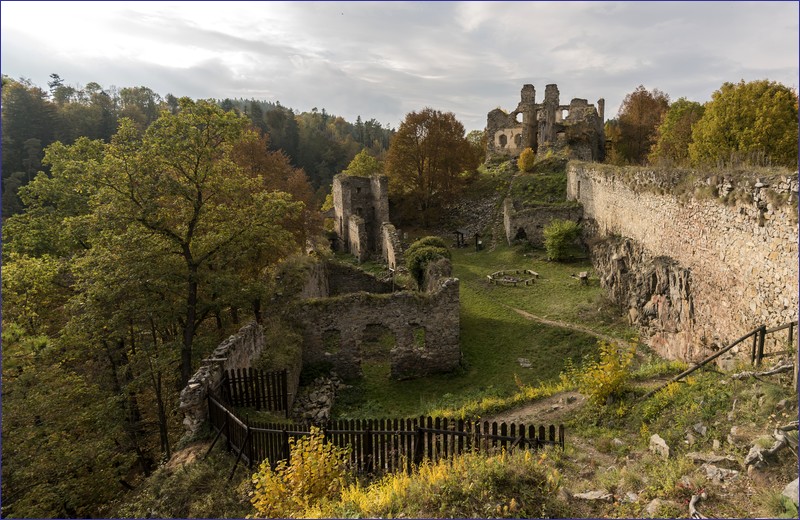
Direction: České Velenice
Borovany (optional) – The forests around the town have long been popular with blueberry pickers. In the sleepy town center, it’s worth seeing the former Augustinian monastery.
České Velenice/Gmünd (optional) – One of the divided Czech towns. Similar to Cieszyn, the Czech side ended up with the less attractive portion, which offers little of interest. The Austrian side, however, features a small palace, a pleasant town center, and the narrow-gauge Waldviertelbahn railway connecting Litschau and Groß Gerungs.
Direction: Jindřichův Hradec / Telč/ Jihlava
Jindřichův Hradec – One of my favorite Czech towns (about 22,000 residents). The large Vajgar Pond spreads through the center, with a picturesque palace on its shore. A beautiful town square. In addition to the square, there’s a city gate, several narrow picturesque streets, and the Regional Museum. Historic houses line Nežárecká Street, and chapels, churches, and a way of the cross can be found around the town. The town’s second biggest attraction was the narrow-gauge railway, which was undergoing reorganization at the time of writing of this article. Its future is uncertain.
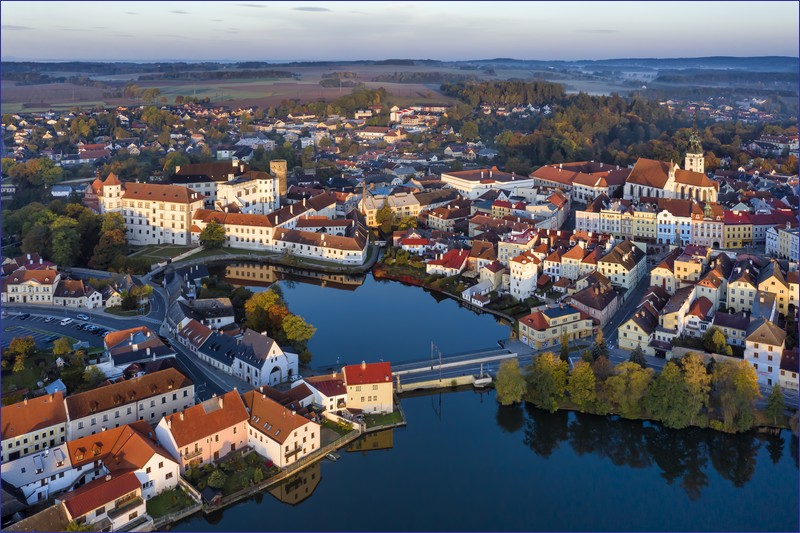
Jihlava – the capital of the Vysočina region. A bit sleepy, but worth visiting for a few hours. One of the largest town squares in the Czech Republic (spoiled somewhat by a shopping pavilion in the middle), nice streets, preserved defensive walls, the photogenic Virgin Mary Gate, several churches, and a small but well-reviewed zoo make it worth a stop. Everything is compact. You can get to Jihlava by express train from Brno. The city has two stations—Jihlava is a renovated main station on the city’s outskirts. It’s a 20-minute walk to the center through housing estates, or you can take public transport. Jihlava město station is right next to the historic center, though when I last visited, it was completely closed. In any case, I recommend the city to every ambitious tourist.
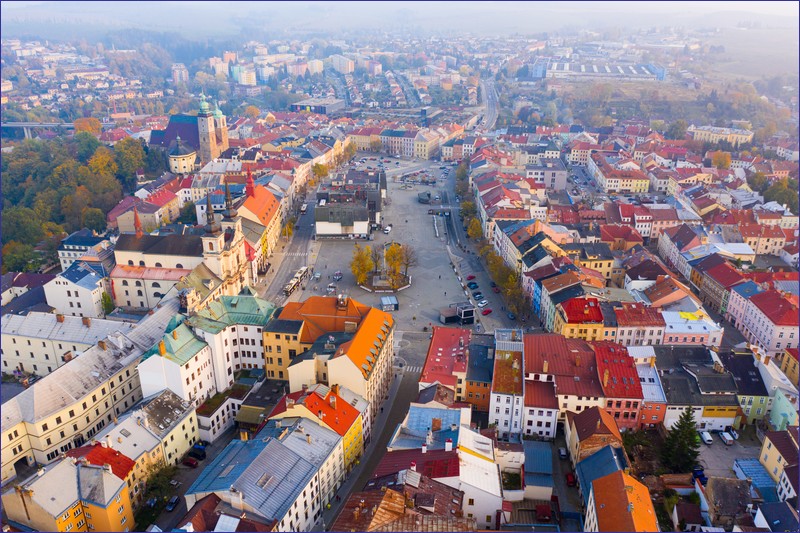
Telč – a stunning town with one of the most beautiful squares I have ever seen. Unfortunately, in tourist season it is crowded with visitors from across Europe. Besides the famous square, it’s worth visiting the castle with its park and walking along the banks of the fish ponds, which add charm to this lovely town. Prices in guesthouses and restaurants are relatively high. Telč is not on a main railway line. To get there, you must transfer at Kostelec u Jihlavy station, served by local and express trains from Brno to České Budějovice and Plzeň. From Jihlava, it’s much faster by bus—the ride takes 37–45 minutes, while by train it’s 30–40 minutes longer. You can continue your journey to Slavonice, located in the South Bohemian Region. This small town has a modest but beautiful center. In the past, it felt like time had stopped decades ago. I’m not sure how it is today.
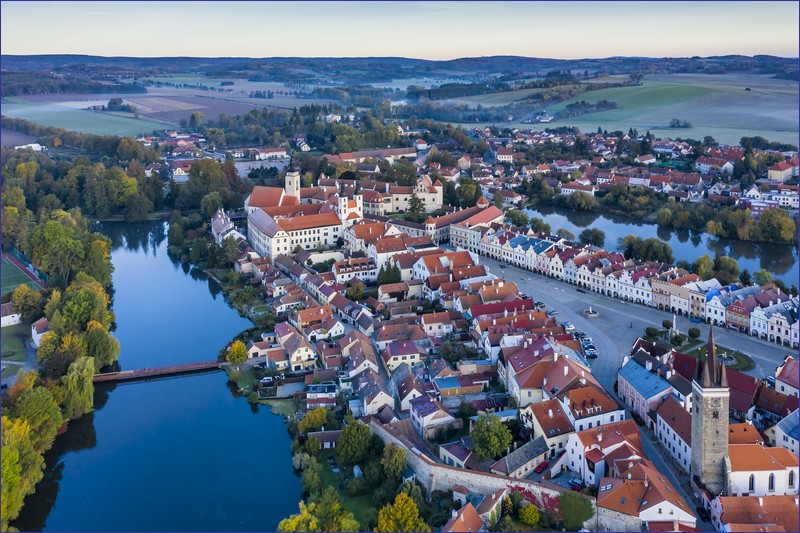
Slavonice – a town in the South Bohemian Region with fewer than 2,500 residents, and the final station on the local railway line from Kostelec u Jihlavy, which passes through Telč (in Vysočina) and Dačice. Slavonice lies right on the Austrian border. Don’t expect spectacular monuments from a town this size, but the town center is one of the most charming I’ve seen in the Czech Republic. And the atmosphere—like time stopped 40 years ago (though I don’t know how it is today). Two city gates are preserved, and I recommend climbing the tower of the Church of the Assumption of the Virgin Mary. Outside the center, there is a Way of the Cross to the Church of the Body of Christ and the Holy Spirit, some chapels, and a fallow deer farm. Two to three hours is plenty.
Direction: Lipno nad Vltavou
Vyšší Brod – The local Cistercian Abbey is one of the most notable tourist attractions near the Lipno reservoir. The monastery was founded in the mid-13th century by Petr Vok of Rožmberk. It’s open year-round. Four guided tours are available during the season, and two outside the season. The complex also houses the Postal Museum.
Lipno nad Vltavou – A popular vacation and recreational destination located by the Vltava Dam. This reservoir is the largest in the Czech Republic. Excellent conditions for outdoor activities – cycling and rollerblading along the reservoir paths, windsurfing, or simply relaxing on the beach. Accessible by train from Rybník; a few direct trains from České Budějovice also run.
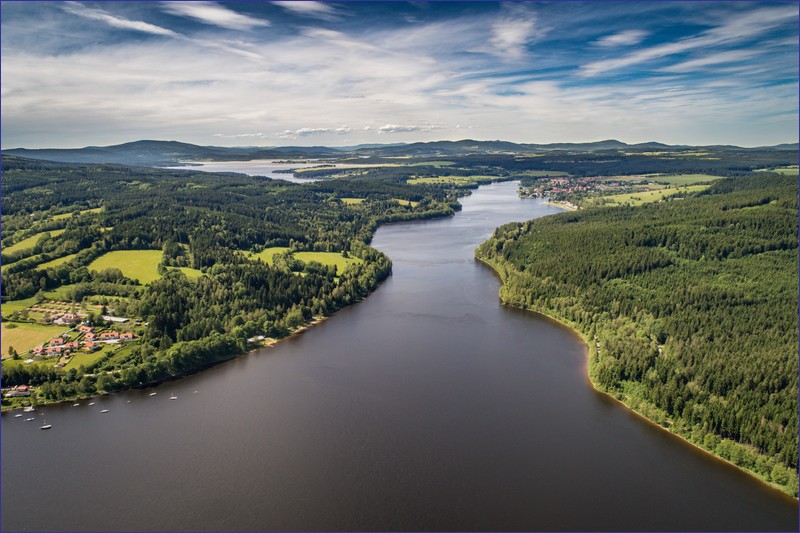
Direction: Strakonice and Plzeň
Strakonice – A railway junction town. The only notable monument is the renovated castle about 1 km from the train station. The complex is shared among three owners: the Church of St. Procopius belongs to the Roman Catholic Church, some parts to the town, and most of it to the South Bohemian Region. The museum “Muzea středního Pootaví Strakonice” is housed in the palace. The Rumpal tower serves as a viewing point. Most of the historic town center was demolished in the 1970s.
Písek (optional) – Formerly known for sand mining; now famous for the oldest bridge in the Czech Republic – the stone bridge called the Deer Bridge. Also worth visiting is the local castle/palace, which houses the Prácheňské Museum. A preserved section of the town walls with a tower can also be seen.
Blatná (optional) – A town worth visiting for one of the most popular Czech palaces, built on an islet where a fortress once stood. Next to the palace, there is a park, game preserve, and the town center. Accessible by train from Beroun or Strakonice.
Plzen – the fourth-largest city in the country and an important cultural, industrial, and historical center. The city is as not popular as most famous Czech cities such as Prague, Karlovy Vary and Ceske Budejovice but has a charming historic center, where you’ll find St. Bartholomew’s Cathedral with the tallest church tower in the Czech Republic, and the Great Synagogue, the third-largest in the world. The city is also home to several interesting museums and zoological garden.
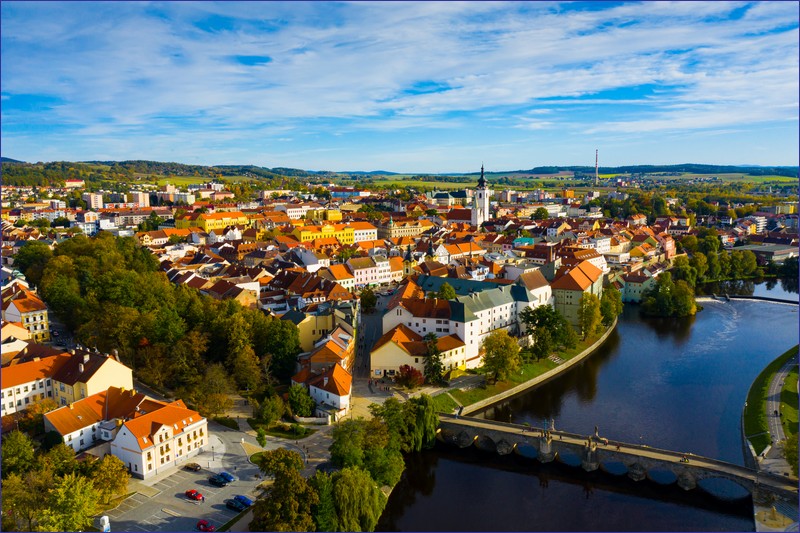
Direction: Třeboň
Třeboň – A very picturesque town known for its fishponds and lovely market square. Located 22 km from České Budějovice – better accessed by bus, as it’s situated on the Veselí nad Lužnicí – České Velenice railway line, which makes train travel from the regional capital quite lengthy. Features include a palace with a park, religious monuments (churches and chapels), and the Old Town Hall Tower, which is open to tourists. Many walking and cycling paths are available.
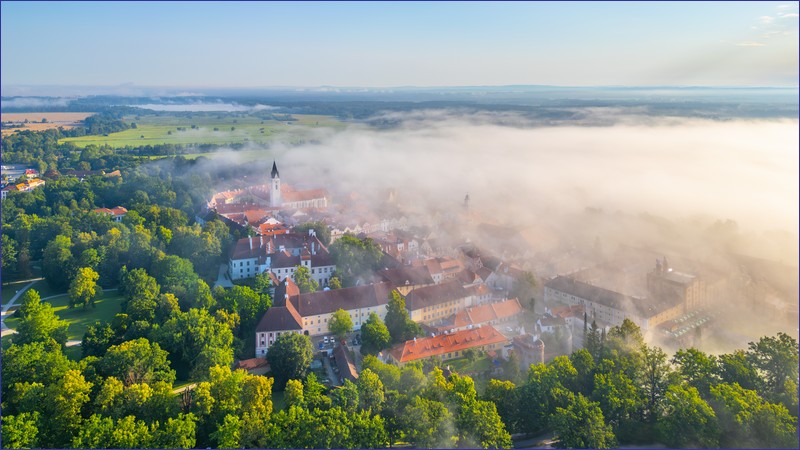
Direction: Tabor
Hluboká nad Vltavou – home to one of the most beautiful castles (but also most expensive) in the Czech Republic. The Neo-Gothic castle was built at the end of the 15th century on the site of a former fortress. Between 1840 and 1871, it was remodeled along with the park in the style of England’s Windsor Castle. Other notable sites include a small Jewish cemetery and remnants of a former Jewish ghetto. For the wealthy, there is a golf course. Travel by bus is recommended; the Hluboká nad Vltavou-Zámostí train station is located over 2 kilometers from the castle. Trains on the České Budějovice – Tábor line stop there.
Tábor – With around 35,000 inhabitants, this town boasts a lovely center with several interesting landmarks. The Old Town Hall houses the Hussite Museum, and the Church of the Transfiguration dominates Žižka Square – its tower is open to tourists in the season. The Chocolate and Marzipan Museum is also popular. Much of the original city walls and one city gate remain. About a kilometer west of the center, the Baroque Klokoty pilgrimage site is one of the most beautiful Baroque monuments in the country. Railway fans can enjoy the Tábor–Bechyně line, the first electrified railway in the Czech Republic.
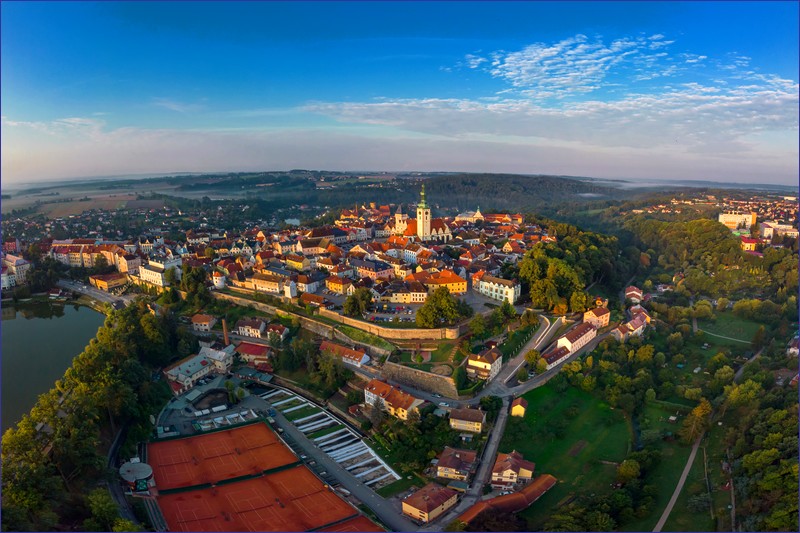
Direction: Linz
Linz – the third-largest city in Austria, located on the Danube River in the northern part of the country, near the Czech border. It is the capital of the Upper Austria region and combines a rich historical heritage with a strong focus on innovation and the arts. Once known as an industrial hub, Linz has transformed into a vibrant cultural center, famously designated as a UNESCO City of Media Arts.
Key attractions include the Ars Electronica Center (a museum of future technology), the Lentos Art Museum, and the beautiful Old Town with its Baroque architecture and the Main Square (Hauptplatz). Visitors can also enjoy views from Pöstlingberg Hill or take a Danube cruise. Linz offers a unique blend of tradition, modernity, and scenic beauty.
Day trips from Ceske Budejovice by train – summary
There are only most important tips for day trips from Ceskes Budejovice by train within two hours ride of regional and fast trains. You can plan for example one-day train trip from Ceske Budejovice to Prague and many other places in the Czech Republic or Austria.
Related articles:
Train travel in the Czech Republic – a comprehensive guide
Scenic railways in the Czech Republic
Narrow-gauge railways in the Czech Republic
